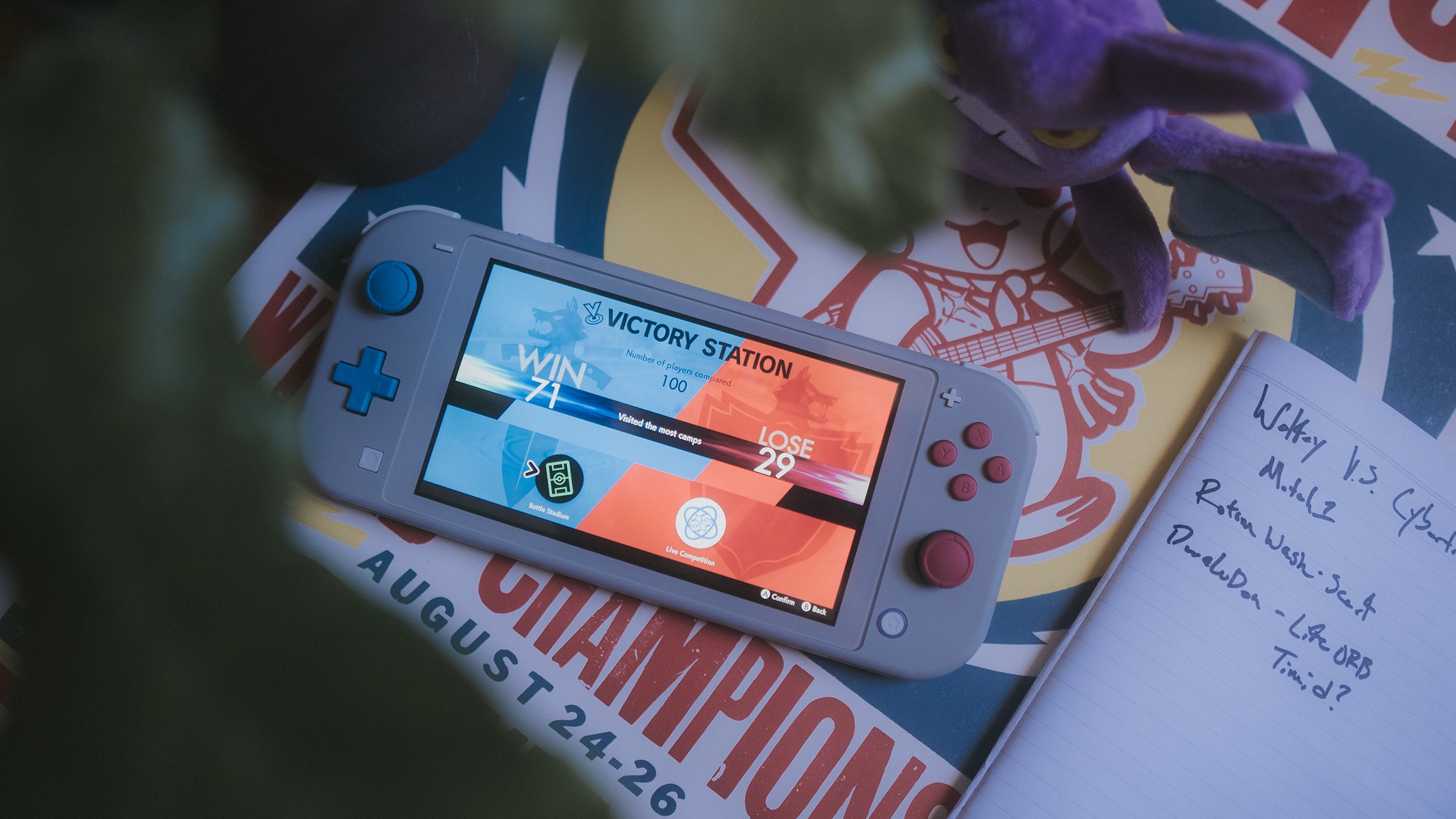
Using Protect in Battle
8min 18sec read
Learn about you can use Protect to gain an advantage in VGC battles.
Written by Aaron Zheng
Battling / General Battling Principles
As we covered in our breakdown about Protect in teambuilding, Protect is one of the most important moves in competitive VGC. This guide will cover a couple of key things, including when to use Protect, playing around your opponent using Protect, and more.
When should I use Protect?
There are plenty of reasons as to why you may want to use Protect on a given turn. The most obvious reason is to prevent your Pokémon from getting knocked out, or taking significant damage, but there are several other ways that Protect can also help you. Here are just some examples/scenarios:
Against a Fake Out user turn 1 of the game into a double-up
To avoid getting hit by an attack that can KO you
To keep a key Pokémon healthy
To reposition safely
Stalling out your opponent’s Dynamax
Stalling out your opponent’s speed control (Trick Room, Tailwind)
Stalling out field effects (Terrain, screens, weather)
Saving one Pokémon and letting its partner deal with a current threat (or switch)
While using Protect can save your Pokémon, there are actually several potential drawbacks to using the move that you have to think about as well. When you use it, you give your opponent the opportunity to:
Switch out their Pokémon
Set up Speed control
Use a stat-boosting move or strategy
Attack more confidently into that Pokémon the following turn since the odds of you getting a double Protect are very low
Double target your other Pokémon
Thus, a key skill in VGC is identifying when you NEED to Protect and when it’s unnecessary to Protect. Here’s a list of questions I ask myself when I’m deciding whether or not to use Protect:
Is my Pokémon at risk of getting KOed this turn by my opponent? Is it at risk of being made “useless” (e.g. a physical attacker getting burnt or a Pokémon getting put to sleep”?
If so, can I actually gain an advantage by Protecting? What will I do to make sure this threat does not exist next turn?
What is my other Pokémon going to do during this turn?
Can it deal with the current threat that I am Protecting against, and if not, do I have something to switch into?
Does my opponent have anything on their side of the field that I need to stall out? Is it absolutely necessary for me to stall it out?
Common examples: Dual Screens, weather, Trick Room, Tailwind
Does my opponent have any way to take advantage of me Protecting?
Common examples: set-up (Swords Dance, Dragon Dance, Substitute), recovery, switching out for free, attacking into the partner Pokemon, setting up speed control
Did I use Protect on the previous turn?
If so, you’ll want to be very careful about using it again - the odds of consecutive Protects are only ⅓. If you fail to get the Protect off, then your Pokémon will be completely useless for the turn.
If my Protect plan works, what does the next turn look like?
As you use Protect, you’ll also want to think about the long-term consequences and the future rather than just the immediate turn. If your Pokémon is still at risk of getting knocked out the subsequent turn, Protect may not actually help with the root cause.
In this example, you can see how Protect was not very effective in actually advancing the board state:
EXAMPLE
Protect Extravaganza
Author: Wolfe
In the finals of the 2015 Massachusetts Regionals, I played against Ashton Cox. In game 2 Ashton finds his Terrakion and Landorus trapped in against my Scrafty and Gothitelle. Ashton goes for a double Protect and gets it, and then goes for a triple Protect and gets that too. After Trick Room goes back up, he gets another double Protect successfully, and then fails his second triple Protect attempt. Despite getting “lucky”, because his Choice Scarf Landorus is locked into Rock Slide and isn’t doing any damage, Ashton isn’t advancing his position at all. In this game, it might have been better for Ashton to let his Terrakion get knocked out to allow for a switch into something that had a bit more offensive pressure.
In this example, you can see how Protect is useful in stalling out field effects:
EXAMPLE
Stalling out Electric TerrainAuthor: Aaron Traylor
In this set played at the North American International Championships, Diana Bros stalls out her own Electric Terrain so that she can set it again later in the game, allowing her Stakataka to attack without fear of being put to sleep by Amoonguss’ Spore.
Link to beginning of set here.
Link to beginning of game here.
Link to Protect here.
Link to set analysis here.
How do I play around my opponent using Protect?
In addition to knowing how to properly use Protect, it’s also important to understand how to play around your opponent using Protect.
The first thing that I’d recommend learning is figuring out which Pokémon are more likely to Protect, and which Pokémon are less likely to carry it. (Reference articles: Wolfe’s Protect guide, Building Up a Knowledge Base to Predict Your Opponent's Plays). For example, in Series 12 VGC, only 5% of Incineroar run Protect, while 97% of Zacian run Protect.
It’s important to learn this because it allows you to take advantage of those Pokémon that don’t frequently run Protect. Some common examples in Series 11 include the aforementioned Incineroar as well as Grimmsnarl, Thundurus, and Porygon 2. Thus, when you’re fighting against these Pokémon, you can generally launch attacks into them more confidently.
One key mistake I often see beginners make is making hard predictions on when their opponent is going to Protect. Sometimes, players are extra confident that a Pokémon will Protect so they ignore it, just for that Pokémon to not actually use Protect and instead use an attack. Thus, you have to always consider the risk/reward of your opponent not using Protect when they seemingly should/have to.
This leads me to the concept of “forcing” your opponent to Protect. Making your opponent use Protect will generally make their next turn substantially more difficult as they cannot use it again with much confidence. As a result, it can actually be useful to attack into something you think that is Protecting: if they don’t Protect, you can just get a large amount of damage off/KO them, and if they do Protect, you can pressure that slot a lot more the subsequent turn.
When do I go for consecutive Protects?
The odds of you getting back-to-back Protects with a Pokémon is ⅓ - that means that ⅔ of the time, your move will fail completely. This not only leaves your Pokémon completely vulnerable for the turn, but it also denies it the option of going for any other attack. As a result, it’s extremely risky to attempt consecutive Protects, and it should generally be seen as a last resort option.
However, in the right situation, going for consecutive Protects can be game-defining if you get it off. Here are some examples of when you may want to consider it:
You need to stall out speed control (e.g. Tailwind, Trick Room) & you do not have reliable switch options anymore
You need to save one Pokémon that can win you the game, and the only way to save it is the KO an opposing threat
You have no better play to make with the Pokémon and don’t want a free switch-in to a Pokémon in the back
Generally, a good principle is to only attempt consecutive Protects when you have absolutely no other options and will lose otherwise.
EXAMPLE
Double Protecting when absolutely necessaryAuthor: Aaron Traylor
In this set played at the North American International Championships, Paul Chua’s double Protect took center stage. He was in a tough spot facing down an Encore Whimsicott and was able to find a path to victory.
Link to beginning of set here.
Link to beginning of game here.
Link to double Protect here.
Link to set analysis here.
EXAMPLE
Double Protecting… on accident?Author: Aaron Traylor
Sometimes in the heat of a tournament you can forget that you used Protect on the turn prior, and inadvertently double Protect. This happened to me in Top 4 of a Regional, where I accidentally double Protected with my Bisharp– and Earthquaked with my Landorus! Luckily for me, the double Protect went off, and I got into a great position because of it– but that game could have been over instantly if it had gone the other way.
Link to beginning of set here.
Link to beginning of game here.
Link to beginning of double Protect here.
Conclusion
Protect is one of the most important moves in competitive VGC, so it’s important to understand how to use it properly and how to play against it. Here are some main takeaways from the article:
Protect can be useful for a wide variety of reasons - in addition to preventing your Pokémon from taking any damage, you also can use it to avoid Fake Out, stall out field conditions, etc.
There are drawbacks to using Protect as well - one of the most important factors to consider is what you are going to do on the subsequent turn after you use Protect, since the odds of going for a consecutive Protect is only ⅓.
Going for consecutive Protects is incredibly risky - you generally want to avoid it unless you feel like you truly have no better options.
It’s helpful to have a general idea of what Pokémon will frequently carry Protect (e.g. Zacian) and what Pokémon will rarely carry it (e.g. Grimmsnarl, Incineroar)
It can be worth it to attack into a seemingly obvious Protect to 1) deny that Pokémon from doing anything for a turn 2) make the subsequent turn harder for them since they don’t have a safe Protect to go for

